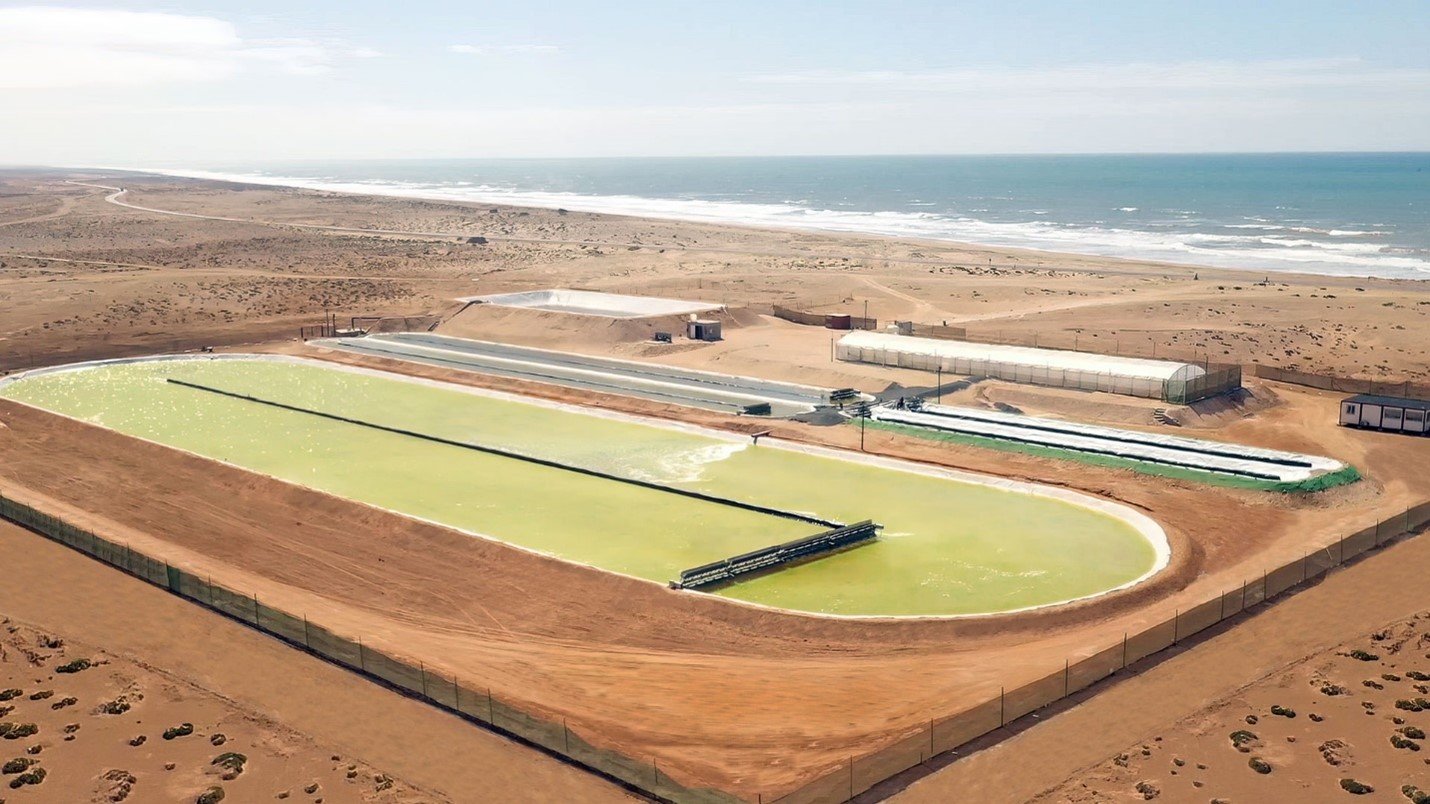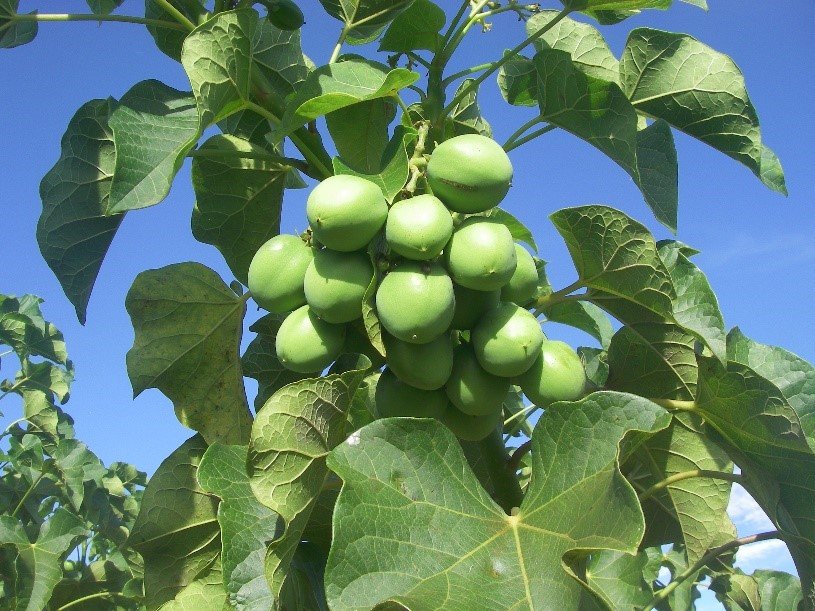The Opportunity for SAF in the Middle East
While the Middle East is known for its abundant reserves of fossil fuels, the Middle East and North Africa (MENA) contain a significant opportunity for sustainable aviation fuel (SAF), and many participants are leading the way to diversify its energy mix and reduce carbon emissions. Unique feedstocks, vast land area, access to seawater, and significant solar potential provide opportunities for both biomass feedstocks and renewable non-biomass feedstocks like solar and wind power-to-liquid (PtL) solutions.
Biomass-Based Feedstocks
For bio-based fuels, some of the primary feedstocks in the Middle East could include traditional SAF feedstocks like waste cooking oil. However, additional feedstocks under development—namely, algae and certain oilseed crops—could be surprisingly well adapted for the region.
Algae
Algae or microalgae, which can be grown in saltwater or wastewater, could be a viable source of biofuels in the region. Algae can grow in a wide variety of water types and even use wastewater or CO2 as a feed to help them grow. Coupled with substantial sunshine, access to seawater, and plenty of land, the Middle East could be a good candidate for industrial algae production. In Abu Dhabi, the Algae Research Laboratory and Microbial Environmental and Chemical Engineering Laboratory (MECEL) at the Mazdar Institute of Science and Technology is researching and analyzing the possibility of using a saltwater-tolerant algae for biofuel production. The project involves growing algae in seawater ponds in the Abu Dhabi desert to prevent competition with water or food resources.
Research into algae growth in the desert has additional synergies with microalgae even being looked at as a way to directly capture and store CO2 underneath the desert by companies such as Brilliant Planet.
Oilseed Crops
Jatropha and Salicornia are two promising oilseed crop feedstocks that are well-suited for the Middle East's arid climate and salty soil conditions. Both crops can be grown on marginal lands that are unsuitable for traditional agriculture, minimizing competition for arable land with food crops.
Jatropha is a drought-resistant shrub that produces non-edible, oil-rich seeds that can be converted into biofuels. Research needs to be done to improve yields, but it has been successfully grown in arid and non-arable regions of Africa and Asia. So far, it has been used for biodiesel production in China and India, and is now being explored as a potential biofuel feedstock in the Middle East.
Salicornia
Salicornia is a salt-tolerant plant that grows in coastal areas and also produces oil-rich seeds that can be used to produce biofuels. Salicornia has already been successfully grown in the United Arab Emirates (UAE) and used as a locally produced sustainable fuel on an Etihad Airways 787 flight with the Sustainable Bioenergy Research Consortium (SBRC) in 2019. The fuel production had additional co-benefits, using a system called the Seawater Energy and Agriculture System (SEAS) to produce seafood in the same environment as the crop.
Non-Biomass Based Feedstocks
The Middle East has some of the highest potential solar power output in the world. Source: WEF UAE Power to Liquid Roadmap 2022
Despite promising unique biological feedstocks, the Middle East will still be challenged to scale up biomass-based SAF production. Therefore, the Middle East is also exploring non-biological renewable sources for the production of SAF. For renewable non-bio feedstocks, the Middle East has particular potential from solar and wind energy. The region has some of the highest levels of solar irradiation in the world, and countries such as Saudi Arabia, the UAE, and Qatar have already launched growing renewable energy programs. Wind energy is also gaining momentum, with countries such as Morocco, Egypt, Saudia Arabia and Oman having significant potential for wind power.
Renewable electricity could be used to produce SAF through power-to-liquid pathways. Additionally renewable energy could be used to power electrolysis that creates green hydrogen. Green hydrogen can be used to help reduce the carbon footprint of SAF as well as provide lower carbon aviation fuels (LCAF).
Despite continued spending on traditional oil and gas resources, there are large scale solar projects under development that will expand renewable energy sources in the region. The largest single site solar farm in the world is currently under development in Saudi Arabia and some of the largest solar farms in the world reside in the region. Northern Africa alone produced over 15 terawatt-hours of wind energy in 2021.
Wind turbines at Lekela wind power station generate electricity, near the Red Sea city of Ras Ghareb, Egypt. (AP)
Key Players
In partnership with the World Economic Forum, the UAE created a roadmap for the production of SAF and renewable hydrogen from PtL technologies by 2050. The report concluded that between 15-73% of the fuel demand of flights refueling in the country could be met from PtL SAF.
In addition to its support for Salicornia, UAE state oil firm Abu Dhabi National Oil Company (ADNOC), renewable energy company Masdar, and oil major British Petroleum (BP) agreed in January to conduct a joint feasibility study on the potential for SAF using municipal solid waste and renewable hydrogen.
Other airlines in the region have also piloted SAF flights or made offtake commitments. Qatar Airways made a 25 million litre offtake commitment starting in 2028 from Gevo, and Emirates was one of the first airlines to operate a demonstration flight with one engine burning 100% SAF.
Dubai International Airport is one of the significant airports in the region that has implemented award-winning sustainability programs and is looking to support SAF for flights departing from the airport. Notably, they have committed to diverting 60% of their waste from going to landfills by the middle of this year.
Conclusion
Overall, the regulatory and policy frameworks for biofuels and other renewable non-bio feedstocks in the Middle East are still evolving, but there is a growing recognition of the need, and appreciation for the opportunity, to transition to more sustainable sources of energy. A research firm recently published that they believe the SAF market in the Middle East and North Africa (MENA) is expected to grow at a rate of over 40% over about the next decade.
The Middle East has significant potential for the production of sustainable aviation fuel from unique biomass feedstocks like algae and Salicornia, and especially from non-biological renewable sources like solar and wind. Key producers like ADNOC are already exploring the production of SAF, and airlines like Etihad are leading the way in demonstrating the feasibility of using SAF in commercial flights.
With the right investment and policy support, the region has the potential to become a significant player in the global SAF market, reducing carbon emissions and diversifying its energy mix.





